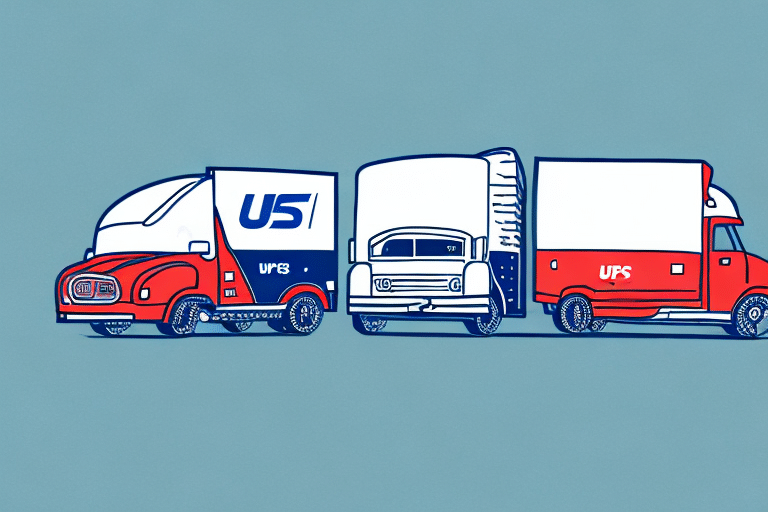Understanding the Differences Between USPS and UPS
When selecting a shipping provider in the United States, two major contenders often come to mind: the United States Postal Service (USPS) and United Parcel Service (UPS). Both offer a variety of shipping solutions, each with its own set of advantages and challenges. This comprehensive comparison delves into their histories, services, pricing, delivery times, tracking capabilities, packaging requirements, insurance options, international shipping, customer support, and more to help you make an informed decision.
Company Histories and Backgrounds
United States Postal Service (USPS)
Established in 1775, USPS is a government-owned entity responsible for providing postal services across the United States. Initially known as the United States Post Office Department, it became an independent agency in 1971. Despite facing challenges from digital communication and evolving market demands, USPS remains a vital component of America's infrastructure, particularly in rural areas.
United Parcel Service (UPS)
Founded in 1907 in Seattle, WA, UPS began as a small messenger service. Over the decades, it has expanded into a global logistics powerhouse, offering package delivery, freight forwarding, and comprehensive logistics solutions. UPS has consistently invested in technology and sustainable practices, such as deploying alternative fuel vehicles to enhance delivery efficiency.
Services Offered
USPS Services
- First Class Mail: Ideal for letters and lightweight packages.
- Priority Mail: Provides faster delivery with tracking.
- Priority Mail Express: Offers overnight delivery in most areas.
- International Shipping: Services like First Class Mail International and Priority Mail International.
- PO Boxes: Secure mailboxes available for rent at post offices.
- Informed Delivery: Digital previews of incoming mail.
UPS Services
- UPS Ground: Cost-effective ground shipping for domestic packages. Learn more here.
- UPS Next Day Air: Guaranteed overnight delivery. More details here.
- UPS 2nd Day Air: Delivery within two business days. Find out more here.
- Freight Forwarding and Logistics: Comprehensive solutions for large shipments.
- UPS My Choice: Customize delivery times and locations.
- UPS Access Point: Convenient package pickup from retail locations.
Pricing and Shipping Rates
Shipping costs vary based on package size, weight, destination, and delivery speed. Generally, USPS is more economical for sending letters and smaller packages domestically. In contrast, UPS often provides better rates for larger packages and international shipments.
USPS Pricing Highlights
- First Class Mail: Starting at $0.55 for letters.
- Priority Mail: Typically ranges from $7 to $20 depending on size and weight.
- Priority Mail Express: Prices start around $26 for overnight delivery.
UPS Pricing Highlights
- UPS Ground: Starts at approximately $8 for small packages.
- UPS Next Day Air: Begins around $25 for overnight delivery.
- UPS 2nd Day Air: Prices generally start at $15.
For detailed and up-to-date pricing, visit the respective official websites:
Delivery Timeframes and Reliability
Both USPS and UPS offer various delivery speeds to meet different needs.
USPS Delivery Options
- First Class Mail: 1-3 business days.
- Priority Mail: 1-3 business days.
- Priority Mail Express: Overnight delivery to most U.S. locations.
UPS Delivery Options
- UPS Ground: 1-5 business days, depending on distance.
- UPS Next Day Air: Guaranteed overnight delivery.
- UPS 2nd Day Air: Delivery within two business days.
Factors such as weather, holidays, and peak seasons can impact delivery times. It's advisable to plan accordingly during high-demand periods like the holiday season.
Tracking Capabilities
Both carriers offer robust tracking systems, but UPS provides more advanced features.
USPS Tracking
- Basic tracking included with most services.
- Real-time updates available through the USPS Tracking tool.
- Mobile app available for on-the-go tracking.
UPS Tracking
- Advanced tracking with delivery date and time estimates.
- Proof of delivery and package redirection options.
- Accessible via the UPS Tracking tool and mobile app.
Packaging Requirements
Proper packaging ensures the safety and integrity of your shipments.
USPS Packaging Guidelines
- Maximum weight: 70 pounds.
- Maximum size: 130 inches (length + girth).
- Packages must withstand being dropped from at least 3 feet.
- Use USPS-provided boxes and envelopes when possible for optimal protection.
UPS Packaging Guidelines
- Maximum weight: 150 pounds.
- Maximum size: 165 inches (length + girth).
- Packages must withstand being dropped from at least 6 feet.
- UPS offers a variety of packaging solutions, including reusable boxes and shipping supplies.
Insurance and Liability Coverage
Protecting your shipments against loss or damage is crucial.
USPS Insurance Options
- Automatic insurance included with Priority Mail and Priority Mail Express.
- Additional insurance available for high-value items.
- Coverage limits vary based on the service used.
UPS Insurance Options
- Automatic coverage up to $100 for most shipments.
- Purchase additional coverage for valuable items.
- Options for declared value coverage based on shipment value.
International Shipping Services
Expanding your reach beyond U.S. borders requires reliable international shipping solutions.
USPS International Shipping
- First Class Mail International: Cost-effective for lightweight packages and letters.
- Priority Mail International: Faster delivery with tracking.
- Priority Mail Express International: Expedited delivery with guaranteed timeframes.
UPS International Shipping
- Comprehensive international package delivery services.
- Customs brokerage and logistics solutions for smoother overseas shipping.
- Global tracking and delivery options tailored to destination countries.
For more information, visit the official pages:
Customer Support and Service
Efficient customer support can significantly enhance your shipping experience.
USPS Customer Support
- Support through the USPS Contact page.
- Phone support available for inquiries and assistance.
- In-person support at local post offices.
UPS Customer Support
- Comprehensive support through the UPS Support Center.
- 24/7 phone support for urgent issues.
- Assistance available at UPS retail locations.
Pros and Cons of USPS vs. UPS
Evaluating the strengths and weaknesses of each carrier can guide your decision.
- Cost: USPS is generally more affordable for small, domestic shipments, while UPS offers better rates for larger and international packages.
- Service Range: USPS provides a broader range of mailing services, including PO Boxes and Informed Delivery, whereas UPS specializes in comprehensive package delivery and logistics solutions.
- Delivery Speed: Both offer expedited shipping, but UPS typically provides more precise delivery timeframes and options.
- Tracking: UPS offers more advanced tracking features, including delivery estimates and redirection options.
- Customer Support: Both carriers provide robust support, but UPS's 24/7 assistance may be more advantageous for urgent needs.
Factors to Consider When Choosing Between USPS and UPS
To determine the best shipping provider for your needs, consider the following factors:
- Package Size and Weight: USPS is ideal for smaller packages, while UPS handles larger shipments more efficiently.
- Destination: For international shipping, UPS might offer more reliable services, though USPS provides competitive rates for certain destinations.
- Budget: Assess your budget constraints to choose the most cost-effective option.
- Delivery Speed: Determine how quickly your package needs to arrive.
- Tracking and Security: Consider the level of tracking and insurance required for your shipment.
- Customer Support: Evaluate the importance of available customer service channels.
Conclusion: Choosing the Right Shipping Service for You
Both USPS and UPS offer robust shipping solutions tailored to different needs. USPS excels in affordability and a wide range of mailing services, making it ideal for personal and small business use. UPS, with its extensive logistics network and advanced tracking, is better suited for larger shipments and international deliveries. By carefully assessing your specific requirements—such as package size, budget, delivery speed, and support needs—you can select the carrier that best aligns with your shipping objectives.






















